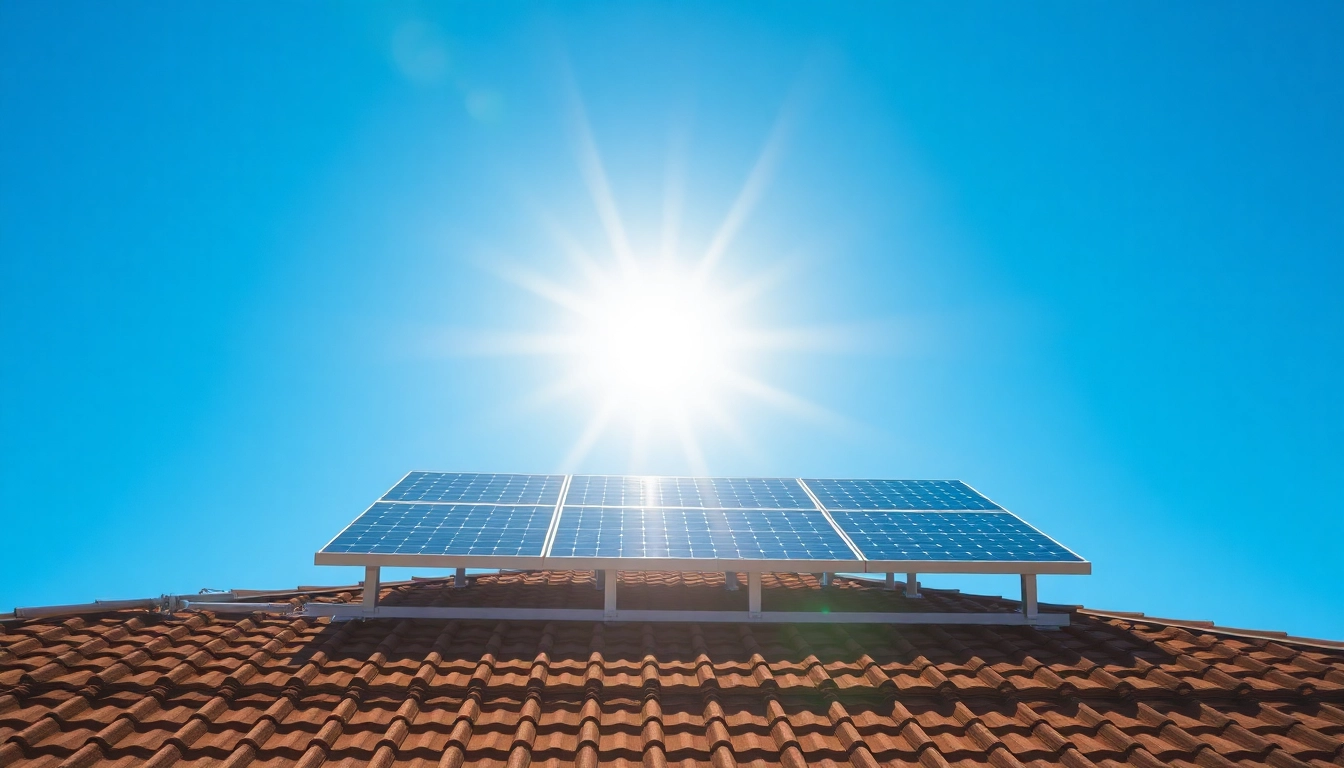Understanding Solar Panel Installation Basics
As renewable energy technologies gain traction, there’s a growing interest in solar power, particularly in solar panel installation. Solar panels convert sunlight into electricity, providing homeowners with a sustainable energy source. Understanding the fundamentals of solar panel installation is crucial for anyone considering this eco-friendly investment. For comprehensive guidance on solar panel installation, let’s delve into what it entails, the benefits, and essential components involved.
What Is Solar Panel Installation?
Solar panel installation refers to the process of setting up photovoltaic (PV) solar panels on a building’s roof or in a designated area to harness solar energy. This process typically involves:
- Assessing the property for solar suitability.
- Selecting the right solar panel system based on energy needs.
- Obtaining necessary permits and approvals.
- Installing the panels and connecting them to the electrical system.
Professional installers often handle the technical requirements to ensure compliance with local regulations and to maximize efficiency. The goal is to produce clean energy that can either be used on-site or sold back to the grid.
Benefits of Installing Solar Panels
Opting for solar panel installation comes with a myriad of benefits:
- Environmental Impact: Solar panels significantly reduce carbon footprint and greenhouse gas emissions.
- Energy Independence: They can provide energy security by reducing reliance on fossil fuels and local utility companies.
- Cost Savings: Utilizing solar energy often leads to lower electricity bills and long-term financial savings. Many homeowners report reduced or even eliminated energy costs.
- Increased Home Value: Properties with solar installations can have a higher resale value, attracting eco-conscious buyers.
- Government Incentives: Many incentives and rebates are available for solar installations that help offset costs.
Key Components of a Solar Power System
Understanding the key components of a solar power system is vital for effective installation:
- Solar Panels: These are the primary components that convert sunlight into electricity. They come in various types, including monocrystalline, polycrystalline, and thin-film.
- Inverters: Inverters convert the DC electricity generated by solar panels into AC electricity, which can be used in homes and businesses.
- Mounting Systems: These are used to securely attach solar panels to roofs or other structures. Roof mounts and ground mounts are the most common types.
- Battery Storage: In some cases, homeowners may choose to install battery systems to store excess energy for use during non-sunny periods.
- Monitoring Systems: These systems track the performance of solar panels and provide data on energy production, helping homeowners optimize their solar energy use.
Steps to Prepare for Solar Panel Installation
Assessing Your Home’s Suitability
Before installation, homeowners should evaluate their property’s capability to support solar panels. This involves:
- Roof Condition: Assess the roof’s integrity, age, and material. If repairs or replacements are needed, they should be completed before solar installation.
- Sunlight Exposure: Determine how many hours of direct sunlight the location receives. Ideally, panels should face south or southwest for optimal performance.
- Space Availability: Ensure there is enough space on the roof or ground for the number of panels needed to meet your energy requirements.
Understanding Local Solar Regulations
Before proceeding with installation, it is essential to understand local zoning laws, building codes, and utility guidelines related to solar panel installations. Obtain necessary permits and confirm compliance with any regulations to avoid potential issues during or after installation.
Budgeting for Solar Panel Installation Costs
Estimating the total cost of solar panel installation can be challenging but crucial for planning. Consider the following factors:
- Equipment Costs: This includes the cost of solar panels, inverters, and mounting hardware.
- Installation Fees: Professional installation typically incurs labor costs, which can vary based on the contractor.
- Permitting and Inspection Fees: Local regulations may require inspections which can affect costs.
- Financing Options: Evaluate available loans, leases, or power purchase agreements (PPAs) that may ease upfront costs.
Consulting with a solar provider can help assess costs accurately and affix the budget.
The Solar Panel Installation Process
Choosing the Right Solar Panels
With an array of options in the market, selecting the correct solar panels is key. Consider the following:
- Efficiency Ratings: Higher efficiency panels convert more sunlight into electricity, making them ideal for limited roof space.
- Type of Panels: Choose between monocrystalline (efficient, space-saving), polycrystalline (cost-effective but less efficient), and thin-film (flexible but less common).
- Warranty Terms: Look for warranties that typically range from 10-25 years, ensuring durability and performance guarantees.
Hiring a Qualified Solar Installer
The expertise of a qualified solar installer can make a significant difference in the installation process and outcome. When selecting an installer:
- Check credentials and certifications, such as the North American Board of Certified Energy Practitioners (NABCEP) certification.
- Read customer reviews and testimonials to gauge reliability and quality of work.
- Ask for a detailed proposal that outlines system design, pricing, and warranties.
Common Installation Techniques Explained
Understanding the common techniques used during solar panel installation can help homeowners know what to expect:
- Roof Installation: This involves affixing the solar panels directly to the roof structure using mounting brackets. A watertight seal is essential to prevent leaks.
- Ground Mount Installation: For properties with ample land space, ground mounts can be an excellent option that offers flexibility in panel orientation.
- Installation of Battery Systems: If incorporating battery storage, specific concerns regarding wiring, positioning, and placement should be addressed.
Maximizing Efficiency After Installation
How to Monitor Solar Panel Performance
Once the solar panels are installed, monitoring their performance is vital to ensure they function optimally. Homeowners can:
- Use monitoring apps provided by the installer or manufacturers to track energy production in real time.
- Compare energy generation data to bills to ensure savings are realized.
- Schedule regular inspections to catch any potential issues early.
Understanding Maintenance Needs
Solar panels typically require minimal maintenance, but regular upkeep is essential to maintaining efficiency. Key considerations include:
- Cleaning the panels to remove dust, debris, and leaves that can obstruct sunlight.
- Checking connections and wiring for any signs of wear or corrosion.
- Scheduling professional inspections every 3-5 years to evaluate overall system health.
Assessing Financial Returns Over Time
To evaluate the financial impact of solar panel installation, homeowners should:
- Calculate the return on investment (ROI) by comparing upfront costs with long-term savings on energy bills.
- Monitor any changes in property value post-installation, as homes with solar panels can often sell for more than comparable homes without them.
- Stay informed about any changes in local or federal solar incentives that may impact overall financial returns.
Future Trends in Solar Panel Installation
Innovations in Solar Technology
The solar industry is rapidly evolving, with innovative technologies continually emerging. Future trends include:
- Bifacial Solar Panels: These panels harvest sunlight from both sides, increasing efficiency.
- Building-Integrated Photovoltaics (BIPV): Incorporating solar technology into building materials, allowing for seamless integration into structures.
- Solar Tracking Systems: These systems adjust the angle of solar panels throughout the day to optimize sunlight capture.
Government Incentives for Solar Panel Adoption
Government incentives remain a significant driving force in promoting solar installations. Homeowners should actively seek out:
- Federal tax credits, like the Investment Tax Credit (ITC), which allows homeowners to deduct a percentage of the installation costs from their federal taxes.
- State-level incentives, grants, and rebates that vary by location but can substantially offset costs.
- Local utility programs that may offer net metering or other benefits for homeowners who rely on solar energy.
Long-term Sustainability of Solar Energy
Solar energy is poised to play a crucial role in achieving global sustainability goals. As technology advances and costs decrease, installing solar panels will become more accessible to homeowners worldwide:
- Increased adoption can lead to a decrease in greenhouse gas emissions and fossil fuel reliance.
- Global initiatives to enhance solar energy infrastructure can potentially create job opportunities in green energy sectors.
- As public awareness grows, so will community support for sustainable energy solutions, fostering a culture of environmental responsibility.



